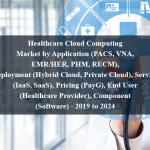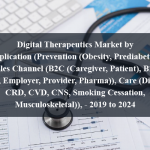OVERVIEW
The Healthcare Fraud Detection Market is currently valued at USD 4.92 billion in 2024 and will be growing at a CAGR of 25.71 % over the forecast period to reach an estimated USD 25.62 billion in revenue in 2029. The healthcare fraud detection market is witnessing significant growth as healthcare organizations and insurance companies increasingly adopt advanced technologies to combat fraudulent activities. This market encompasses a range of solutions and services designed to detect, prevent, and mitigate fraudulent practices within the healthcare industry. These solutions utilize various techniques, including data analytics, machine learning, artificial intelligence, and predictive modeling, to identify irregular patterns and anomalies in claims, billing, coding, and other healthcare transactions. Key drivers of this market include the rising prevalence of healthcare fraud, stringent regulatory mandates, and the need for cost containment and revenue protection. Additionally, the advent of electronic health records (EHRs) and digitalization in healthcare processes have further propelled the demand for sophisticated fraud detection solutions. As the healthcare landscape continues to evolve, the healthcare fraud detection market is poised for sustained expansion, driven by ongoing technological advancements and the persistent efforts of stakeholders to safeguard the integrity of healthcare systems worldwide.
Firstly, the escalating instances of healthcare fraud worldwide have heightened the demand for robust fraud detection solutions. As fraudulent activities such as false claims, overbilling, and identity theft persist, healthcare organizations and insurance companies are increasingly investing in advanced technologies to combat these threats. Secondly, stringent regulatory mandates, particularly in regions like the United States with regulations such as the False Claims Act and the Affordable Care Act, compel healthcare entities to adopt effective fraud detection measures to ensure compliance and avoid hefty penalties. Moreover, the imperative to contain costs and protect revenue streams amidst escalating healthcare expenditures is driving the adoption of fraud detection solutions. By identifying and preventing fraudulent activities, organizations can minimize financial losses and preserve the integrity of their operations. Additionally, the advent of technologies such as artificial intelligence, machine learning, and data analytics has revolutionized fraud detection capabilities, enabling more accurate and efficient identification of fraudulent patterns and anomalies. As healthcare systems continue to evolve and digitalize, the demand for innovative fraud detection solutions is expected to escalate, further driving the growth of the healthcare fraud detection market.
Market Dynamics
Drivers:
Firstly, the escalating instances of healthcare fraud worldwide have heightened the demand for robust fraud detection solutions. As fraudulent activities such as false claims, overbilling, and identity theft persist, healthcare organizations and insurance companies are increasingly investing in advanced technologies to combat these threats. Secondly, stringent regulatory mandates, particularly in regions like the United States with regulations such as the False Claims Act and the Affordable Care Act, compel healthcare entities to adopt effective fraud detection measures to ensure compliance and avoid hefty penalties. Moreover, the imperative to contain costs and protect revenue streams amidst escalating healthcare expenditures is driving the adoption of fraud detection solutions. By identifying and preventing fraudulent activities, organizations can minimize financial losses and preserve the integrity of their operations. Additionally, the advent of technologies such as artificial intelligence, machine learning, and data analytics has revolutionized fraud detection capabilities, enabling more accurate and efficient identification of fraudulent patterns and anomalies. As healthcare systems continue to evolve and digitalize, the demand for innovative fraud detection solutions is expected to escalate, further driving the growth of the healthcare fraud detection market.
Key Opportunities :
The increasing adoption of electronic health records (EHRs) and digitalization in healthcare processes creates opportunities for more sophisticated fraud detection solutions leveraging advanced analytics and machine learning algorithms. As healthcare data becomes more readily available in digital formats, there is a greater potential to uncover patterns and anomalies indicative of fraudulent activities. Secondly, the rise of telehealth and remote patient monitoring opens up new avenues for fraud detection, as these modalities introduce unique challenges and vulnerabilities that require specialized detection techniques. Additionally, the growing prevalence of value-based care models and accountable care organizations (ACOs) creates opportunities for fraud detection solutions tailored to the specific needs of these models, such as identifying patterns of inappropriate utilization or discrepancies in quality reporting. Moreover, the expanding global healthcare market offers opportunities for vendors to provide fraud detection solutions to emerging markets seeking to strengthen their healthcare systems and combat fraud as they undergo digital transformation. By capitalizing on these opportunities, stakeholders can drive innovation and contribute to the continued advancement of the healthcare fraud detection market.
Restraints :
One significant challenge is the complexity and diversity of healthcare fraud schemes, which often evolve in response to detection methods, making it difficult for fraud detection solutions to keep pace. Moreover, the sheer volume and variability of healthcare data pose challenges in terms of data quality, integration, and interoperability, hindering the effectiveness of fraud detection algorithms and analytics. Additionally, the high cost of implementing and maintaining advanced fraud detection technologies may act as a barrier for smaller healthcare organizations with limited resources. Furthermore, concerns surrounding data privacy and security, particularly in light of stringent regulations such as the Health Insurance Portability and Accountability Act (HIPAA), can create challenges in data sharing and collaboration among healthcare entities and solution providers. Lastly, the potential for false positives and false negatives in fraud detection algorithms can undermine stakeholder confidence and lead to inefficient allocation of resources for investigating and addressing potential fraud cases. Addressing these restraints will require collaborative efforts from industry stakeholders to develop more robust and adaptive fraud detection solutions while ensuring compliance with regulatory requirements and safeguarding patient privacy and data security.
Regional Information:
• In North America, the healthcare fraud detection market is characterized by stringent regulatory frameworks and the prevalence of advanced healthcare systems. The region has witnessed substantial adoption of fraud detection solutions driven by regulatory mandates such as the False Claims Act and the Affordable Care Act. Additionally, the presence of established healthcare infrastructure and a high level of digitalization in healthcare processes has facilitated the implementation of sophisticated fraud detection technologies leveraging artificial intelligence and data analytics. However, challenges such as the complex nature of healthcare fraud schemes and concerns surrounding data privacy and security continue to shape the market landscape.
• In Europe, the healthcare fraud detection market is influenced by a diverse regulatory landscape across different countries and regions. While stringent regulations such as the General Data Protection Regulation (GDPR) underscore the importance of data privacy and security, variations in healthcare systems and reimbursement models present unique challenges for fraud detection efforts. Nevertheless, the region has seen increasing adoption of fraud detection solutions, driven by the need to combat rising instances of healthcare fraud and protect the integrity of healthcare systems. Collaboration among healthcare organizations, government agencies, and solution providers is crucial for addressing these challenges and driving innovation in fraud detection technologies.
• In the Asia Pacific region, the healthcare fraud detection market is characterized by rapid digital transformation and evolving healthcare systems. Emerging economies in the region are witnessing significant investments in healthcare infrastructure and technology, creating opportunities for the adoption of advanced fraud detection solutions. However, diverse regulatory environments, cultural factors, and disparities in healthcare access and quality pose challenges for effective fraud detection efforts. Moreover, the region’s vast and heterogeneous healthcare landscape requires tailored approaches to fraud detection that account for local nuances and challenges. Collaboration among stakeholders and investments in education and capacity-building are essential for driving progress in healthcare fraud detection across the Asia Pacific region.
Recent Developments:
• March 2022: Veriff released a new suite of biometric authentication solutions designed specifically for the healthcare industry. According to the company, the new product will utilize artificial intelligence and facial recognition technology to perform user identification.
• February 2022: The Canadian Life and Health Insurance Association (CLHIA) launched an industry initiative to pool claims data and use advanced artificial intelligence tools to enhance the detection and investigation of benefit fraud.
Key Market Players:
Optum, IBM Corporation, SAS Institute Inc., EXLService Holdings, Inc., CGI Group Inc., LexisNexis Risk Solutions, Inc., Pondera Solutions, Change Healthcare, Conduent, Inc., and FICO.
Frequently Asked Questions
1) What is the projected market value of the Healthcare Fraud Detection Market?
– The Healthcare Fraud Detection Market is expected to reach an estimated value of USD 25.62 billion in revenue by 2029.
2) What is the estimated CAGR of the Healthcare Fraud Detection Market over the 2024 to 2029 forecast period?
– The CAGR is estimated to be 25.71% for the Healthcare Fraud Detection Market over the 2024 to 2029.
3) Who are the key players in the Healthcare Fraud Detection Market?
– Optum, IBM Corporation, SAS Institute Inc., EXLService Holdings, Inc., CGI Group Inc., LexisNexis Risk Solutions, Inc., Pondera Solutions, Change Healthcare, Conduent, Inc., and FICO.
4) What are the drivers for the Healthcare Fraud Detection Market?
– The increasing prevalence of healthcare fraud worldwide has led to a surge in the demand for robust fraud detection solutions. Healthcare organizations are investing in advanced technologies to combat fraudulent activities, while stringent regulatory mandates like the False Claims Act and the Affordable Care Act enforce compliance. The advent of technologies like artificial intelligence and machine learning has revolutionized fraud detection capabilities.
5) What are the restraints and challenges in the Healthcare Fraud Detection Market?
– The complexity and diversity of healthcare fraud schemes, the volume and variability of data, and the high cost of advanced fraud detection technologies pose significant challenges. Data privacy and security concerns, such as HIPAA, can also hinder data sharing and collaboration. The potential for false positives and false negatives in fraud detection algorithms can undermine stakeholder confidence and resource allocation.
6) What are the key applications and offerings of the Healthcare Fraud Detection Market?
– Key applications of healthcare fraud detection include claims analysis to identify anomalies and patterns indicative of fraudulent activities, provider screening and monitoring to verify credentials and detect irregular billing practices, patient identity verification to prevent identity theft and medical identity fraud, and predictive analytics to forecast and prevent potential instances of fraud before they occur. These applications leverage advanced technologies such as artificial intelligence, machine learning, and data analytics to enhance detection accuracy and efficiency, ultimately safeguarding the integrity of healthcare systems and protecting patients and payers from financial losses.
7) Which region is expected to drive the market for the forecast period?
– North America is expected to have the highest market growth from 2024 to 2029
Why Choose Us?
Insights into Market Trends: Global Market Studies reports provide valuable insights into market trends, including market size, segmentation, growth drivers, and market dynamics. This information helps clients make strategic decisions, such as product development, market positioning, and marketing strategies.
Competitor Analysis: Our reports provide detailed information about competitors, including their market share, product offerings, pricing, and competitive strategies. This data can be used to inform competitive strategies and to identify opportunities for growth and expansion.
Industry Forecasts: Our reports provide industry forecasts, which will inform your business strategies, such as investment decisions, production planning, and workforce planning. These forecasts can help you to prepare for future trends and to take advantage of growth opportunities.
Access to Industry Experts: Our solutions include contributions from industry experts, including analysts, consultants, and subject matter experts. This access to expert insights can be valuable for you to understand the market.
Time and Cost Savings: Our team at Global Market Studies can save you time and reduce the cost of conducting market research by providing comprehensive and up-to-date information in a single report, avoiding the need for additional market research efforts.












